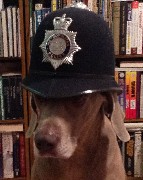Powder residue, lubricant, and lead particles have formed crud that now causes friction impeding cylinder rotation. Crud gets under extractor star and pushes star back against that part of frame called firewall. Use a toothbrush to clean under star. Then clean front of cylinder. Note the most forward screw on the side plate. Removing screw permits you to withdraw crane with cylinder from frame. Do this and separate cylinder from crane. Wipe down.
J frame snubs have a "too short" extractor rod. Even when rod is pushed all the way back, cases will not clear the cylinder. Improper technique cases them to hang up because the short rod will not eject cases with enough force to clear cylinder. The result is crud under the star. You must hold the revolver straight up and down and then thrust the rod back vigorously with force. This technique will eject cases neatly because gravity is assisting.
Your ammo is the culprit. If you have a large supply, you may be able to work around the problem. Start with a clean barrel. Before shooting, apply a very thin film of grease in the barrel. This lube can be any parts house grease. Wheel bearing grease is cheap and useful. Thin means the bore appears shiny. Johnson's Paste Wax will work too. It is my first choice. Shoot and check for leading. Reapply. This is a giant pain in the ass.
I have removed lead by shooting jacketed bullets through a leaded bore. This is a final step after removing most of it. Easiest way is using a short section of cleaning rod with a brass bristle brush attached. Install rod in electric drill. S&W techs would use this method.
Using jacketed bullets to remove lead is an old trick. I no longer do this. I have very likely owned more handguns than any hobbyist here. One thing that means is that I fucked up more handguns than the rest of you nice folks. Think twice before blowing out lead by firing a jacketed bullet over it.



 Reply With Quote
Reply With Quote





